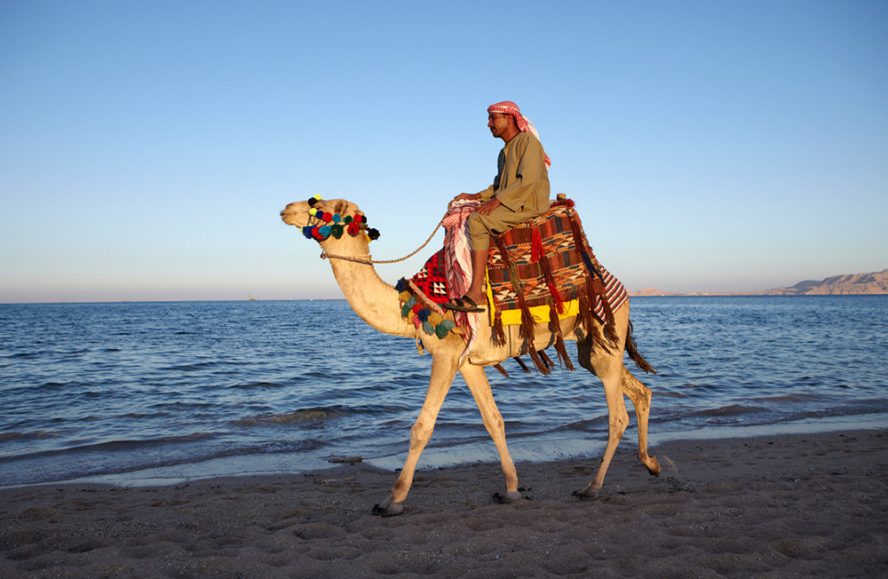Camels linked to mystery disease
Livestock may be a “reservoir” of germs that can infect people

MERS first showed up in a man from Saudi Arabia. There as in Egypt (shown here), camels have long been a common mode of off-road travel.
iStockphoto
A mysterious and deadly virus has sickened 94 people — killing 46 — in parts of the Middle East, Europe and northern Africa. A new study finds that camels (the one-humped type) may have introduced the new disease to people.
The germ responsible is a virus. It reproduces in people’s lungs, throats and noses. Scientists recently named the disease it causes Middle East respiratory syndrome, or MERS.
Scientists discovered it after a few people became sick with severe pneumonia. This condition inflames and damages lungs. After examining the germ’s DNA, researchers discovered the virus is related to some that infect bats. But no one with the disease had any known contact with bats.
Now researchers found antibodies against the MERS virus in the blood of 50 camels. Antibodies are proteins made by the immune system. They help identify or destroy foreign substances in the blood. They also serve as a marker of which particular foreign substance their host had encountered. All of the affected camels had been retired racers from the Middle East nation of Oman.
Finding antibodies in the blood of dromedary camels suggests the animals had been exposed to MERS. (Dromedary camels are the one-humped type common in North Africa and the Middle East.) An international team of researchers described their findings August 9 in the medical journal Lancet Infectious Diseases.
The researchers also found low levels of antibodies against the MERS virus in the blood of dromedary camels from the Canary Islands. They are off of Africa’s northwest coast.
None of the exposed camels appeared sick. And neither Oman nor the Canary Islands has reported human cases of MERS. But unconfirmed reports suggest some people with MERS in other countries may have been around camels or goats before falling ill.
The results could mean that camels and camel relatives, such as goats, may be a link in a chain of infection that can sicken people. It might also be that a virus similar to MERS has been in camels for a long time but only recently gained the ability to infect people.
Camels are a common livestock species in the Middle East and North Africa, where they also are used for racing. They also are a source of meat and milk. So there are many ways people might contact infected animals, the researchers note.
Power Words
antibodies Any of a large number of Y-shaped proteins that the body produces to fend off infectious invaders such as bacteria and viruses. Antibodies neutralize, tag or destroy viruses, bacteria and other foreign substances in the blood.
infection The successful invasion of a disease-causing microorganism into the body where it multiples, possibly causing serious injury to tissues (such as the skin, lungs, gut or brain).
inflammation An immune system response to injury or infection. White blood cells flock to the site. The cells gobble microbes and release chemicals to fight the infection. But the chemicals can cause heat, redness, swelling and pain.
pneumonia A lung disease in which infection by a virus or bacterium causes inflammation and tissue damage. Sometimes the lungs fill with fluid or mucus. Symptoms include fever, chills, cough and trouble breathing.
virus A molecule containing genetic information and enclosed in a protein shell. A virus — which can cause illness — can live only in the cells of living creatures. Although scientists frequently refer to viruses as live or dead, in fact no virus is truly alive. It doesn’t eat like animals do, or make its own food the way plants do. It must hijack the cellular machinery of a living cell in order to reproduce.







